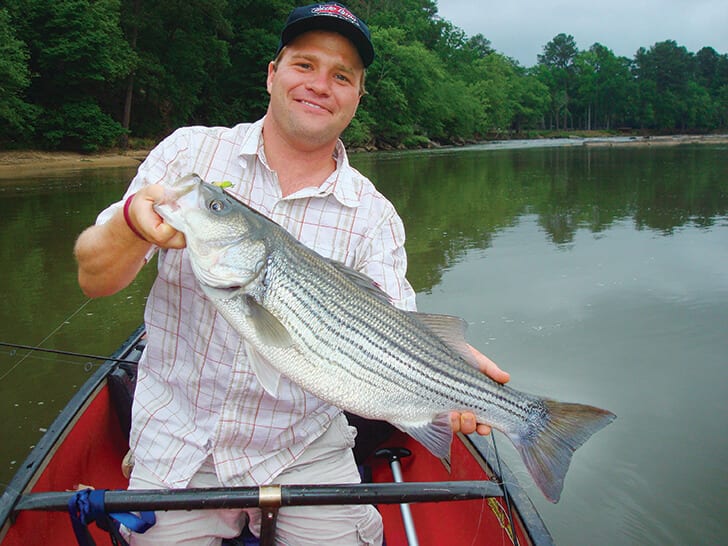Access to skinny water and the ability to launch anywhere are the two most prominent advantages to fishing under paddle power. At no other time is this more advantageous than during the spring spawning runs.
When longer days and warming water temperatures spur the urge to spawn, many species go on the move. On reservoirs, ponds and lakes, bass, crappie and bream will all be shallow in some stage of the spawn. The shallow draft of a canoe or kayak allows anglers to sneak into backwaters to find the beds.
But even more exciting this time of year are the species that run out of the reservoirs and up the creeks and rivers. Up any tributary that feeds a good fishery, spring offers the best fishing of the year for one species or another.
Each spring, white bass in huge numbers push up rivers and creeks to spawn. They stage in the current breaks and provide fast action for anglers throwing spinners, curly tail jigs, small crank-baits and even flies. In a canoe or kayak, white bass make for an interesting float trip. Drift down the river, prospecting with a few casts in each eddy. That first strike tells you it’s time to drop anchor. Where there is one white bass, there is usually a whole school. They might weigh a pound on average, but they can get up to four or five pounds and fight much harder than their weight.
In many fisheries, walleye are most susceptible when they head upriver to spawn. For a fish that spends most of its time in the deepest water it can find, the spring run is really the only time a paddling angler can target them efficiently. They are consolidated in the river, where they school up near the bottom behind sandbars or other current breaks. They can be caught with deep-running lures bounced slowly along the bottom or a live baitfish fished with enough weight to keep it down near the bottom.
The king of the spring spawning runs has to be the landlocked striped bass that state wildlife agencies stock in reservoirs. There is no freshwater fish so large and powerful that can be found in such skinny water. In many systems, the spring run is just a precursor to the larger summer runs that occur when reservoir water conditions become uncomfortable for the fish. In spring and summer, chucking an oversized swimbait to eddies created by wood structure or drifting a live baitfish on a circle hook under a balloon can lead to surprisingly large results.
And the best thing about these spring runs is access to them can actually be better for anglers in little plastic boats. Bank-bound anglers are limited to one stretch of shoreline. Big boats are impeded by shoals and shallow water. With a canoe or kayak, the only limitations are private property and the distance you’re willing to carry a boat to launch.
